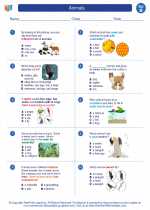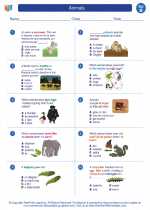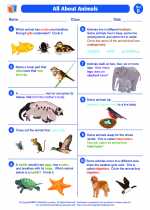Defense in Living Organisms
Defense is the protection of living organisms from potential harm, such as predators, pathogens, and environmental threats. In biology, defense mechanisms are essential for the survival and well-being of all living organisms. These mechanisms can be physical, chemical, or behavioral in nature, and they help organisms to avoid or counteract potential dangers.
Types of Defense Mechanisms
There are several types of defense mechanisms found in living organisms:
- Physical Defenses: These include features such as shells, thorns, and tough skin that provide a physical barrier against predators.
- Chemical Defenses: Some organisms produce toxic chemicals or compounds that deter predators or pathogens. Examples include the poison in a pufferfish or the toxins in certain plants.
- Behavioral Defenses: Many organisms exhibit behaviors that help them avoid predators, such as camouflage, playing dead, or fleeing from danger.
- Immune System: In animals, including humans, the immune system provides defense against pathogens through a complex network of cells and proteins that identify and neutralize invaders.
Examples of Defense Mechanisms
Here are some examples of defense mechanisms in different organisms:
- Porcupine Quills: Porcupines have quills that they can raise when threatened, making them a formidable deterrent to predators.
- Skunk Spray: Skunks can release a noxious spray from their anal glands as a defense mechanism against predators.
- Camouflage: Many insects and animals have evolved to blend into their surroundings, making them difficult for predators to spot.
- Antibacterial Compounds: Some plants produce compounds that have antibacterial properties, protecting them from microbial pathogens.
Importance of Defense Mechanisms
Defense mechanisms are crucial for the survival and success of living organisms. They allow organisms to protect themselves from harm, increase their chances of survival, and ensure the continuation of their species. Understanding defense mechanisms also provides valuable insights for fields such as medicine, agriculture, and conservation.
Study Guide
To further explore the topic of defense in living organisms, consider the following study guide:
- Research and document at least three different defense mechanisms found in plants and animals.
- Discuss the role of the immune system in defending the human body against pathogens.
- Observe and record the behavioral defense mechanisms exhibited by a particular animal species in its natural habitat.
- Investigate how human activities, such as deforestation and pollution, can impact the ability of organisms to defend themselves in their environments.
By exploring these areas, you will gain a deeper understanding of the diverse and fascinating defense mechanisms employed by living organisms.
[Defense] Related Worksheets and Study Guides:
.◂Science Worksheets and Study Guides Second Grade. Animals

 Activity Lesson
Activity Lesson
 Worksheet/Answer key
Worksheet/Answer key
 Worksheet/Answer key
Worksheet/Answer key
 Worksheet/Answer key
Worksheet/Answer key
 Worksheet/Answer key
Worksheet/Answer key
 Vocabulary/Answer key
Vocabulary/Answer key
